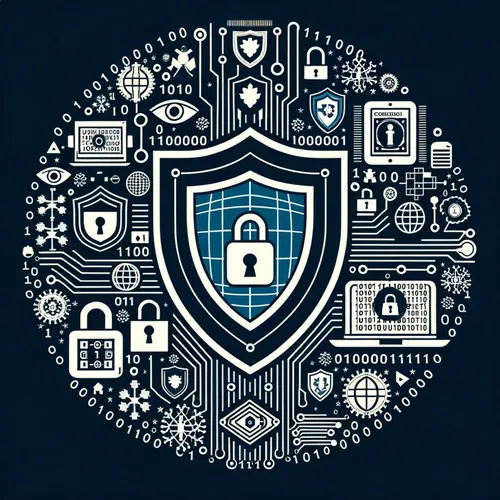Cyber Fireworks: U.S. Bolsters Defenses as China Threat Looms | Tech Shield Showdown Heats Up This July
- Author
- Quiet. Please
- Published
- Tue 01 Jul 2025
- Episode Link
- https://www.spreaker.com/episode/cyber-fireworks-u-s-bolsters-defenses-as-china-threat-looms-tech-shield-showdown-heats-up-this-july--66824620
This is your Tech Shield: US vs China Updates podcast.
It’s Ting here, and if you thought U.S.-China cyber drama would take a July break, think again. Let’s cut to the chase: this week’s cyber battlefield was all about defense upgrades, urgent advisories, and a few eyebrow-raising, high-tech chess moves.
First, the Department of Defense just ramped up its cyber shield in the wake of the latest Defense Intelligence Agency (DIA) threat assessment. PLA, that’s China’s People’s Liberation Army, is doubling down on cyber and space warfare initiatives. U.S. officials are crystal clear—Chinese cyber actors are not just probing; they’re pre-positioning for possible attacks on critical infrastructure, everything from power grids to communications. According to the DIA, if conflict seems imminent, China probably won’t hesitate to pull the cyber trigger. Call it digitally arming the borders[1].
Now, let’s talk about the nitty-gritty. This week saw a raft of new government advisories. The Cybersecurity and Infrastructure Security Agency (CISA) went loud on patching specific vulnerabilities in internet-facing servers—especially after the revelations about the PurpleHaze threat cluster. PurpleHaze, linked to notorious Chinese groups APT15 and UNC5174, has been caught in reconnaissance mode, mapping targets like SentinelOne and dozens of organizations across manufacturing, finance, telecom, and government. The attacks? They’re not smash-and-grab; they’re slow, quiet, and precise, which is classic China-nexus tradecraft[3].
On the industry side, companies like Lockwell are pushing out easy-to-adopt security protocols for smaller businesses—think: password managers, two-factor authentication, rapid vulnerability patching. The messaging? Even incremental improvements can make you a harder target, which not only keeps hackers at bay but boosts business reputation among partners. But beware: as Lockwell warns, those DIY fixes, while tempting, leave gaps if not kept up to snuff[2].
Emerging tech is also joining the front lines. AI-driven threat detection is moving beyond the hype and proving essential, especially for identifying malware implants like those used by Volt Typhoon—the Chinese group busted last year for burrowing into U.S. infrastructure. The new defense playbook emphasizes not just stopping attacks but also spotting the reconnaissance phase before digital saboteurs can get comfy[5].
Expert hot take: The U.S. is finally acting on the understanding that cyber defense isn’t just IT’s problem—it’s national security. The responses are smarter and more collaborative, but, let’s be honest, there are still holes. The U.S. needs to keep getting proactive, not reactive. China’s hackers are patient, strategic, and always learning.
So, in this week’s Tech Shield match, the U.S. leveled up fast, but the game is far from over. Stay tuned—because neither side is likely to blink first. This is Ting, decoding the cyber chessboard.
For more http://www.quietplease.ai
Get the best deals https://amzn.to/3ODvOta
